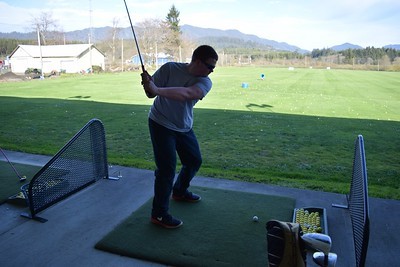The Ultimate Beginners Guide To Golf: 10 Essential Tips For Success
09/08/2023
Welcome to the wonderful world of golf! At first glance, all those clubs, swings, and rules might seem a little overwhelming, but fear not! Our beginner’s guide to golf is here to be your trusty caddy, providing you with the ultimate roadmap to golfing success.
We’ll show you the ropes, help you navigate the terminology, provide context, and help you understand what you will need, build a sturdy foundation for your game, minimize hunting for lost balls, and maximize your enjoyment of this great game.
Ready? Set? Let’s tee off together and review the four key areas of Equipment, Fundamentals, Rules, and Etiquette.
TABLE OF CONTENTS
Getting Started with Golf
From a very broad perspective, golf is a game of precision and strategy that can be very rewarding but requires patience and many practice sessions. It is played on expansive outdoor courses with the objective of getting your golf ball into a series of holes in as few strokes as possible. Each shot, from powerful drives from the tee box to long approach iron shots from the fairway to scrambling with wedges around the green, to putts on the green, presents its own unique set of challenges.
It may seem odd at first. You have a big bag that carries a set of specialized clubs to hit a little dimpled ball that you, sometimes, have to place on a tee. Let’s not forget the specialized shoes, gloves and a number of additional accessories. And, each piece of equipment is laden with proprietary technologies assured to better your game.
The scoring system in golf revolves around counting every stroke taken throughout an 18-hole round. Each hole has an assigned ‘par’ which indicates how many expertly executed strokes it should take to complete that hole, typically ranging from par-3s to par-5s.
After you’ve played a few rounds, you become eligible for a handicap. What?
About three-quarters of all golf courses are open to the public, providing a great opportunity for beginner golfers to access and get acclimated with this great game. Just keep in mind that playing a full round of 18 holes can last between three and five hours, so remember to pace yourself. And don’t forget to digest the ultimate beginner’s guide to golf.

Preparing for Your First Round
If you’ve made up your mind to start playing and become a beginner golfer, there are some crucial steps to take before stepping onto the course. Rules, regulations, and etiquette on the course are critical to a fundamental understanding of the game, but let’s start of with a quick overview of equipment and fundamentals. It will make your initial round much more enjoyable and help bypass typical errors made by novices.
You’ll need to familiarize yourself with different types of clubs (drivers, irons, wedges, etc.) and the balls used, depending on their purpose and distance performance. Learning how to use them effectively based on the conditions faced during gameplay, such as fairways, roughs, bunkers, and greens, is essential. We go into details below and have put together additional guides, reviews, and recommendations to help dive deeper into areas of interest.
Beyond knowing the equipment, getting a good grip and swing stance is essential for developing a consistent and effective technique. Golf Lessons are always helpful and can be taken in person, or online. This can lower your scores over time and eventually move you up the ranks from amateur to professional play. Even if you’re just enjoying casual weekend rounds to just play golf with friends and family, take the time to learn golf etiquette. It can really enhance the beginner golf experience. Don’t worry about keeping score just yet. That will come with time. Yes, your golf score is important but fundamentals first will help instill the golf basics, develop a good swing, and know you’re ready.
Plus, honing your putting and chipping skills can really boost your total score. Tight matches usually hinge on these aspects.
Key Takeaway:
Golf is more than just a swing-and-hit game; it’s a blend of precision, strategy, and patience. Before teeing off for the first time, familiarize yourself with golf rules, etiquette, equipment types, and their uses. Mastering your grip and swing stance will help you develop an effective technique that can lower your scores over time. Remember to pace yourself

Essential Golf Equipment
The journey into golf as a beginner starts with equipping yourself with the right tools. Golf basics include your equipment. Among these, golf clubs are vital, and choosing them wisely is crucial for your game’s progress. As you practice golf and start playing on a regular basis you will come to appreciate the nuances of each.
Related: Best Beginner Drivers of 2023
Ultimate Beginners Guide to Golf’s way to choose Your Clubs
Selecting the correct golf club can have a substantial effect on your playing ability and your golf shots. The variety of clubs includes drivers, fairway woods, irons, wedges (pitching wedge and sand wedge), putters, and fairway woods – each designed to serve specific purposes during different stages of the game.
Your driver aids in achieving long-distance shots off the tee box, while irons assist you with shorter distances requiring higher precision. Wedges prove useful around greens (pitching wedges) or when dealing with challenging bunkers (sand wedges) or rough patches on courses for your short game.
A fairway wood bridges gaps between drivers and irons, offering versatility from various lies on the course. Lastly, putters come into play for rolling balls into holes over short distances, generally on greens where precision matters most.
In addition to appearance considerations, choose your golf bag based on convenience and functionality. It should comfortably hold all your equipment, including extra balls and tees, along with rain gear if needed.
Amazon has a good selection of golf clubs ideal for beginners
Questions to Ask When Buying Beginner Golf Clubs
Should I get a custom fitting? Custom-fitting golf clubs can vastly improve a golfer’s performance by enhancing accuracy, boosting distance, and providing greater shot consistency. It can also increase comfort and prevent injuries by reducing the need to adjust swings to ill-fitting clubs. Lastly, these personalized clubs can not only provide a psychological edge by boosting confidence but also aid beginners in learning a consistent and effective swing more rapidly.
What clubs would best complement my physical size and strength? Club weights and lengths can greatly impact your performance. It is crucial to identify a set that’s built for your body type.
What is my skill level and how does that affect the type of clubs I should buy? If you’re a true freshman, consider starting with a beginner’s set. As your skill level progresses, you can start buying clubs that are more tailored to your game.
What’s the difference between cavity back and blade irons, and which one is more suitable for me? Cavity back irons are more forgiving and generally recommended for beginners, while blade irons offer more precision but are less forgiving on off-center hits.
How many clubs will I need? The rules of golf allow you to carry up to 14 clubs in your bag.
Which brand is the best for beginners? Some brands are known for producing high-quality, beginner-friendly golf clubs, so understanding which one suits you the best can be beneficial.
Related: How To Clean Golf Balls

Selecting Your Golf Balls
Among the most valuable beginner golf tips is choosing the right golf ball.
As a beginner golfer, it’s essential to be aware of the key attributes of a golf ball, as they can significantly impact your game. Here are the main attributes to consider:
- Construction
- Two-Piece Balls: These are durable and provide maximum distance. They have a solid core and a cover, typically made of Surlyn. They are often more forgiving for beginners.
- Multi-Piece Balls: These offer better control and feel due to their softer cover and additional layers (core, mantle). They can provide more spin but may not be as forgiving.
- Feel
- The feel of a golf ball is subjective and can vary from soft to firm. Some beginners prefer a softer feel, while others like the feedback of a firmer ball. Experiment to determine your preference.
- Compression
- Low-Compression Balls: These have a softer feel and are easier to compress. They are suitable for slower swing speeds and can help beginners achieve more distance.
- High-Compression Balls: These are firmer and require higher swing speeds for optimal performance. They offer better control but may not be suitable for beginners with slower swings.
- Spin
- Low-Spin Balls: These reduce side spin and are more forgiving, helping to keep your shots straighter. They are ideal for beginners who struggle with slicing or hooking the ball.
- High-Spin Balls: These provide more spin and control, which can be beneficial for advanced players but may exacerbate mishits for beginners.
- Dimple Pattern
- Dimple patterns affect the ball’s flight and trajectory creating turbulence in the air as the ball flies through it. This turbulence reduces drag, which is the air resistance that slows the ball down. So, the dimples help the ball maintain its speed and stability during flight, allowing it to travel farther and more predictably. Without dimples, a player’s hooks and slices would be accentuated, the ball would not fly as high and it would make consistent shot-making (key to any good golfer) much more difficult to acheive.
- Price
- Golf balls come in various price ranges. As a beginner, you don’t need to invest in expensive balls. Find a ball that fits your budget while still offering the performance you need.
- Durability
- Beginners may lose golf balls frequently while practicing. Consider balls that are durable and resistant to scuffs, as they will last longer and be more cost-effective.
- Swing Speed
- Consider your swing speed when choosing a golf ball. Slower swingers may benefit from low-compression balls, while faster swingers might prefer higher-compression options
Check our piece on the technology that goes into golf ball manufacturing and review of the best golf balls for beginners. It goes into greater detail on specific brands that may be a great fit for you.
Related: Best Golf Balls For 2023
If you have ever wondered why golf balls have dimples, check out our piece that explores its evolution to the technological marvel it has become today. It’s not just about how many dimples are on a golf ball.
But if you’re more experienced and want better control, spin, and longer carries, go for high-performance multi-layered premium ones. They’ve got top-notch materials and aerodynamics that help perfect your flight paths in different conditions – boosting your scores whether you’re playing a serious tournament or a friendly weekend game. And don’t worry about handicap levels; these balls are loved by pros everywhere. Yes, they might cost a bit more than regular ones but trust me – they’re worth every penny when it comes to improving accuracy, consistency, power, and durability in gameplay. Putting money into quality gear means better results which leads to having even more fun while learning the ropes of golfing.
Key Takeaway:
Now that we’ve taken a look at golf clubs and golfs, let’s take a look at the basics of the golf swing to help you get best out of each.

Golf Swing Basics
Mastering the fundamentals of the golf swing is crucial for beginners. It all starts with how you hold the club.
The Golf Grip: The Beginning of Everything
Your golf grip, the way you hold the club, plays a significant role in transferring force to the ball and influencing its direction. For right-handed players, place your left hand on top of the handle and your right hand beneath it; lefties should reverse this.
A proper grip leads to consistent contact with the ball, resulting in control over distance and accuracy. Did you know that an average male amateur golfer can drive as far as 217 yards? Good technique makes all the difference.
Swing Mechanics: From Backswing to Downswing
The backswing and downswing comprise the two primary stages of swing mechanics; the former setting up power generation through shoulder rotation away from the target, arms lifted parallel to the ground, while the latter sees the lower body initiating rotation toward the target before upper body and hands release stored energy onto the ball at the impact point. The backswing sets everything up; it’s where power is generated by turning your shoulders away from the target while lifting your arms and club until they’re parallel to the ground.
The magic happens during the downswing when the lower body initiates rotation toward the target, followed by the upper body and finally, the hands, releasing stored energy onto the ball at the impact point, resulting in a strong drive when executed correctly.
Maintaining balance throughout these movements ensures stability and promotes consistency in both speed and direction shot after shot.

Balanced Finish: Completing Your Swing
The balanced finish is the final piece of the puzzle when it comes to swinging techniques. After making contact with the ball, continue the rotation so that your chest faces the target while maintaining firm footing. This ensures no loss or leakage occurs within the kinetic chain used throughout the entire motion.
A well-executed follow-through not only results in an optimal trajectory but also increases the likelihood that subsequent swings will maintain the same high level of performance due to the inherent muscle memory benefits associated with repetitive actions performed under stable conditions.
Practice makes perfect, so don’t get discouraged if things don’t go as planned initially. Keep working on those fundamentals.
Key Takeaway:
Master the golf swing basics – it’s all in the grip and balance. The right grip transfers force, while a solid backswing generates power. Unleash that energy during your downswing for a strong drive. A balanced finish boosts performance consistency. Keep practicing to perfect these fundamentals.
Golf Course Etiquette
As a beginner golfer, understanding the etiquette of the game is just as important as mastering your swing. Not only does it demonstrate respect for this time-honored sport, but it also shows courtesy towards your playing partners and fellow golfers on the course.

Dress Code: More Than Just Appearance
The dress code in golf can vary from one club to another. However, most clubs require you to wear a collared shirt along with tailored shorts or trousers. It’s not just about looking good; proper attire ensures comfort and flexibility during play.
Golf shoes are another crucial aspect of dressing for a round of golf – they provide better grip while swinging and walking around the greens. While some courses may allow sneakers, others may require specific types of golf shoes. So always check the local club rules before stepping onto the turf.
Tee Time: Punctuality Counts
When it comes to tee time, being punctual is not just polite—it’s essential. Tee times ensure a smooth flow throughout the day on any golf course. If you’re running late or unable to make it at all, informing the clubhouse staff promptly helps them adjust schedules without inconveniencing other players.
The Tee Box Protocol
At the beginning of each hole, there is an unwritten rule that every player must follow—the order of play starts from the tee box itself. The player who scored the lowest on the previous hole usually has ‘honors,’ meaning they get to hit first off the next tee. If two or more players are tied, then the order remains the same, promoting fairness among participants. This applies to match-play scenarios where scores matter between opponents rather than the total strokes taken over the entire 18 holes.
Let’s dive into “ready golf,” a concept aimed at quickening the game. This rule lets whoever is ready first, no matter their position in the group, to go ahead without waiting for their turn based on how they played last. Always remember to fix marks on the green after approach shots – it helps keep things looking sharp and minimizes damage.
Key Takeaway
Don’t just perfect your swing, ace golf etiquette too. Dress appropriately for comfort and flexibility, and always check club rules about footwear. Punctuality is key – don’t mess up tee times. Respect the unwritten rule of ‘honors’ at the tee box to maintain fairness in play. Remember: it’s not just a game; it’s also about
FAQs in Relation to Beginner Golf Guide
What is the best way for a beginner to learn golf?
Taking professional lessons, studying golf rules and etiquette, practicing regularly at a driving range, and playing rounds on various courses can accelerate your learning curve.
What should I do for my first golf lesson?
Show up with an open mind. Wear appropriate attire and bring necessary equipment like clubs if you have them. Be ready to learn basic swing techniques and course rules.
How should a beginner swing a golf club?
Aim for control over power. Start by mastering grip technique, then move onto stance alignment, backswing mechanics, and downswing sequence until achieving solid contact consistently.
What do I need to start playing golf?
You’ll need essential gear such as clubs and balls, comfortable shoes, knowledge of game basics including rules and etiquette, plus a willingness to practice regularly.
How many clubs can I carry in my bag?
According to the rules of golf, a golfer is allowed to carry a maximum of 14 clubs in their bag during a round of play. These 14 clubs can be a combination of various types, including drivers, fairway woods, irons, hybrids, wedges, and a putter. It is important to note that carrying more than 14 clubs is a breach of the rules and can result in penalties.
Is there a shortcut to start shooting lower scores right away?
As a beginner golfer, there are indeed some shortcuts and strategies you can employ to help lower your golf score. While these may not guarantee instant success, they can certainly assist in improving your overall game. Here are a few tips:
1. Focus on your short game: Many beginners tend to overlook the importance of the short game, which includes shots around the green and putting. Developing solid chipping, pitching, and putting skills can lead to significant score improvements. Practice these aspects of the game regularly to gain confidence in your ability to get the ball close to the hole and sink putts.
2. Master the art of course management: Rather than relying solely on distance, consider the strategic aspects of the game. Learn to assess the course, analyze the risks, and make smart decisions. This can involve selecting the right club for each shot, avoiding potential hazards, and playing to your strengths. By focusing on course management, you can avoid unnecessary mistakes and maximize your scoring opportunities.
3. Work on your pre-shot routine: Developing a consistent pre-shot routine can help you approach each shot with focus and confidence. This routine may involve visualizing your intended shot, aligning yourself properly, and taking a few practice swings. Establishing a routine helps to eliminate distractions and build a more repeatable swing, leading to improved accuracy and shot consistency.
4. Practice regularly: Consistent practice is key to improving your golf game. Dedicate time to work on different aspects, such as your swing, short game, and putting. Additionally, practicing on the driving range, hitting different clubs, and simulating on-course scenarios can help you become more comfortable and proficient in different situations. Remember, improvement takes time and patience, so make practice a regular part of your golf routine.
5. Take lessons from a golf professional: Seeking guidance from a qualified golf professional can be immensely valuable, especially for beginners. A golf instructor can analyze your swing, address any flaws, provide personalized feedback, and suggest specific drills to improve your technique. They can also offer tips on course strategy and help you develop a solid foundation for your game. Investing in lessons can greatly accelerate your progress and save you from developing bad habits.
By implementing these shortcuts and strategies, you can expedite your improvement as a beginner golfer. However, it’s important to remember that golf is a challenging sport that requires dedication and practice. Enjoy the process, stay patient, and celebrate the incremental progress you make.
How many golf lessons should I take before I play my first few rounds?
The number of lessons you should take before playing your first round of golf can vary depending on various factors, including your natural ability, dedication to practice, and availability of lessons. However, it is generally recommended to take at least a few lessons to establish a basic understanding of the game and develop proper fundamentals.
Golf lessons can provide you with essential knowledge about the rules, etiquette, and various techniques involved in the game. They can help you understand critical aspects such as grip, stance, posture, and swing mechanics. By learning the fundamentals correctly from the start, you can avoid developing bad habits that could hinder your progress in the long run.
While a few lessons can be beneficial, keep in mind that golf is a skill-based sport that requires practice and patience to improve. The more you practice and play, the more you’ll understand the intricacies of the game and develop a feel for different shots.
Find the Best Golf Ball for Beginners in 2023Find the Best Golf Ball for Beginners in 2023
What is stroke play?
Stroke play is a scoring format used in golf that determines a player’s score based on the total number of strokes taken over the entire round. In stroke play, each player plays their own ball and counts the number of strokes they take on each hole.
Here’s how stroke play typically works:
1. Counting Strokes: On each hole, players count the number of strokes it takes them to get the ball from the tee into the hole. This includes all shots, including drives, approach shots, chips, and putts.
2. Total Strokes: At the end of the round, the player tallies up the total number of strokes taken on all holes. Each individual hole’s score is recorded on a scorecard.
3. Comparison: In stroke play, the goal is to have the lowest total score (fewest strokes) possible. Players can compare their overall scores to determine performance rankings both within their group and against other competitors.
4. Handicap Adjustments: In some stroke play competitions, players’ scores may be adjusted based on their handicap. Handicap is a numerical measure of a player’s ability, and it allows golfers of different skill levels to compete fairly against one another. The handicap system adjusts a player’s score by subtracting their handicap from their total strokes to determine their net score. This adjustment can provide more equitable competition among players of varying skill levels.
Stroke play is the most common scoring format used in professional tournaments and casual rounds alike. It emphasizes consistency over the entire round and rewards players who can consistently shoot low scores. It offers a fair and comprehensive assessment of a golfer’s performance and allows for direct comparisons among players.
Are there quick fixes for poor alignment?
Poor alignment in a golf stance can have a significant impact on your shots, causing them to stray off-target. While there are no magical quick fixes, here are a few tips to help improve your alignment:
1. Use Alignment Aids: Utilize alignment aids to help you properly align your body. You can use alignment sticks, golf clubs, or even visual markers on the ground to create a reference line. Place the aid parallel to the intended target line and use it as a visual guide to align your feet, hips, and shoulders.
2. Choose a Target Spot: Instead of focusing solely on your ultimate target, pick a spot a few feet in front of your ball on your intended target line. This intermediate target can serve as a more tangible point to align yourself towards. Aim to position your body parallel to this target spot.
3. Check Your Feet Alignment: One common mistake is having your feet misaligned with your intended target line. Take a moment to double-check the alignment of your feet. They should be parallel to the target line, ensuring that they are not pointing left or right of the desired target.
4. Strengthen Your Visual Alignment: Train your eyes to see proper alignment by regularly practicing your setup position in front of a mirror or with video analysis. This visual feedback can help you identify any alignment issues and make necessary adjustments. Over time, you’ll develop a better sense of what proper alignment looks and feels like.
5. Establish a Consistent Pre-shot Routine: Develop a pre-shot routine that includes aligning yourself consistently before each shot. A consistent routine will help you focus on alignment and make it a natural part of your setup process.
6. Seek Professional Guidance: If you’re unable to correct your alignment issues on your own, consider seeking guidance from a golf instructor or professional. They can give you specific tips and drills tailored to your needs, helping you address alignment problems effectively.
Remember, working on alignment is an ongoing process that requires practice and attention to detail. By incorporating these techniques into your routine and being mindful of your alignment, you can gradually improve your stance and accuracy on the golf course.
Are there any substances I should stay away from to keep my clubs clean?
Yes, there are certain substances you should avoid when cleaning your golf clubs to prevent damage. Here are some substances to stay away from:
1. Harsh Chemicals: Avoid using strong chemicals such as bleach, ammonia, or abrasive cleaners on your golf clubs. These can strip away the protective finishes, damage the clubheads’ paint or coatings, and potentially corrode metal surfaces.
2. Abrasive Materials: Stay away from abrasive materials like wire brushes, steel wool, or abrasive scrubbers. These can scratch and damage the clubheads, shafts, and grips, affecting their performance and appearance.
3. Water Exposure: While a little water is generally fine, avoid excessive exposure to water, especially submerging your golf clubs in water or leaving them in a wet environment for an extended period. Water can cause rusting of metal components, deteriorate grip materials, and weaken adhesives holding clubheads together.
4. Solvents and Acids: Avoid using solvents, strong acids, or acidic cleaners, as they can corrode and damage the clubheads and shafts. These substances can lead to discoloration, paint or finish damage, and compromise the overall integrity of the clubs.
To clean your golf clubs effectively, use mild solutions or specialized golf club cleaning products. Fill a bucket with warm water mixed with a gentle dishwashing liquid or mild soap. Use a soft-bristled brush or a toothbrush to gently scrub the clubheads, grooves, and grips. Wipe them dry with a clean towel after cleaning.
Regularly inspect your golf clubs for any signs of damage or wear and tear. Minor maintenance, such as wiping them down after each round and storing them in a clean and dry environment, can help extend their lifespan and keep them in good condition.
If you’re unsure about the appropriate cleaning methods for your specific clubs, consult the manufacturer’s guidelines or seek advice from a golf professional or a club repair specialist.
How quickly can I expect to shoot lower scores?
As a beginner golfer, the rate at which you can expect to lower your golf scores will vary depending on several factors, including your natural ability, dedication to practice, frequency of play, and quality of instruction. It’s important to approach the game with realistic expectations and understand that improvement takes time and consistent effort.
While individual progress may vary, here are some general guidelines:
1. Initial Progress: As a beginner, you may initially experience more significant score improvements as you learn the basic fundamentals, get familiar with the rules and etiquette, and develop a better understanding of the game. In the early stages, making adjustments to your technique or gaining a basic understanding of strategy can lead to noticeable score reductions.
2. Plateaus: It’s common to encounter plateaus during your golf journey. After experiencing initial improvements, progress may slow down as you refine your skills and work on more nuanced aspects of the game. Plateaus can be frustrating, but they’re a natural part of the learning process. The key is to remain patient, focused, and committed to continued practice and development.
3. Long-Term Improvement: Ultimately, the rate at which you lower your scores will depend on your commitment to practice and improvement over the long term. Regularly practicing different facets of the game, seeking guidance from golf professionals, and playing on various courses can help you gain experience, develop a better feel for different shots, and make better strategic decisions on the course.
While it’s difficult to provide an exact timeframe for score improvements, it’s essential to focus on the enjoyment of the game and the learning process itself. Every golfer progresses at their own pace, and it’s important not to compare your progress to others. By setting realistic goals, staying dedicated to practice, and enjoying the journey, you will steadily improve and shoot lower scores over time.
Remember, golf is a sport with lifelong learning opportunities, and continual improvement is part of the beauty of the game. Embrace the small victories along the way and celebrate your progress, regardless of the pace.
Are there any hacks to build a solid stance?
Building a solid golf stance is crucial for maintaining balance, stability, and consistency in your golf swing. While there are no true “hacks,” there are some tips and techniques to help you establish a solid stance:
1. Proper Alignment: Aim your body parallel to your target line. Ensure that your feet, knees, hips, and shoulders are all aligned with the target line. This alignment promotes better swing mechanics and allows you to swing along the desired path. Use alignment aids, such as alignment sticks or visual markers, to help you achieve proper alignment.
2. Width and Balance: Start with your feet shoulder-width apart to provide a stable and balanced base. Distribute your weight evenly on the balls of your feet, avoiding excessive weight on the toes or heels. This balance helps you maintain stability throughout your swing.
3. Bend from the Hips: Bend forward from your hips, maintaining a slight athletic knee flex. This forward bend positions your body closer to the ball, allowing your arms to hang naturally and promoting a more centered rotation during the swing.
4. Grip Pressure: Establish a relaxed grip while maintaining control of the club. Avoid gripping the club too tightly as it can restrict your wrist movement and result in a tense swing. Find a grip pressure that allows for a fluid and natural swing motion.
5. Ball Position: Place the ball in an appropriate position relative to your stance, which may slightly vary depending on the club you are using. Generally, you want the ball to be positioned just ahead of the center of your stance for irons. Experiment with ball position to find what works best for you.
6. Practice and Consistency: Developing a solid golf stance requires practice and repetition. Spend time at the driving range or practice facility, working on your setup and stance. Consistency is key, so develop a pre-shot routine that includes setting up to the ball in the same manner each time.
Remember, building a solid golf stance takes time and may require adjustments based on your body type, flexibility, and swing characteristics. It can be beneficial to seek guidance from a golf professional who can provide personalized instruction and help you refine your stance based on your individual needs.
How important is a pre-shot routine to becoming a good golfer?
What exactly is a target line?
What do the colors of the tee markers represent?
Conclusion
Getting started with golf is an exciting journey of discovery, where you learn the rules, get in your practice swings, and prepare for your first round on the greens.
The Beginner Golf Guide is here to equip you with the knowledge you need to select the essential equipment for your game. This includes choosing the right clubs and balls that are best suited for beginners like yourself.
Mastering the mechanics of your swing is a critical part of developing your golf skills. It’s all about finding the right grip strength, maintaining balance, and making solid contact with the ball. Depending upon tips from your golfing buddies may not yield the results you hoped for.
Finally, understanding golf course etiquette is essential for every beginner golfer. From following dress codes to playing with partners, knowing the proper etiquette completes your golfing experience.
Golf is not just a sport; it’s an art form that combines physical prowess with strategic thinking. Whether you’re pursuing golf as a casual hobby or aiming for professional levels, our comprehensive guide has got you covered every step of the way!
If you’re ready to take your love for golf beyond this guide and truly immerse yourself in mastering this beautiful game, Fore-Sites is here to support you. We offer detailed product reviews, valuable tips and tricks, and comprehensive guides that will make enjoying golf simpler than ever before. So why wait?
Post Tags:#Beginner’s Guide To Golf
Find the Best Golf Ball for Beginners in 2023






